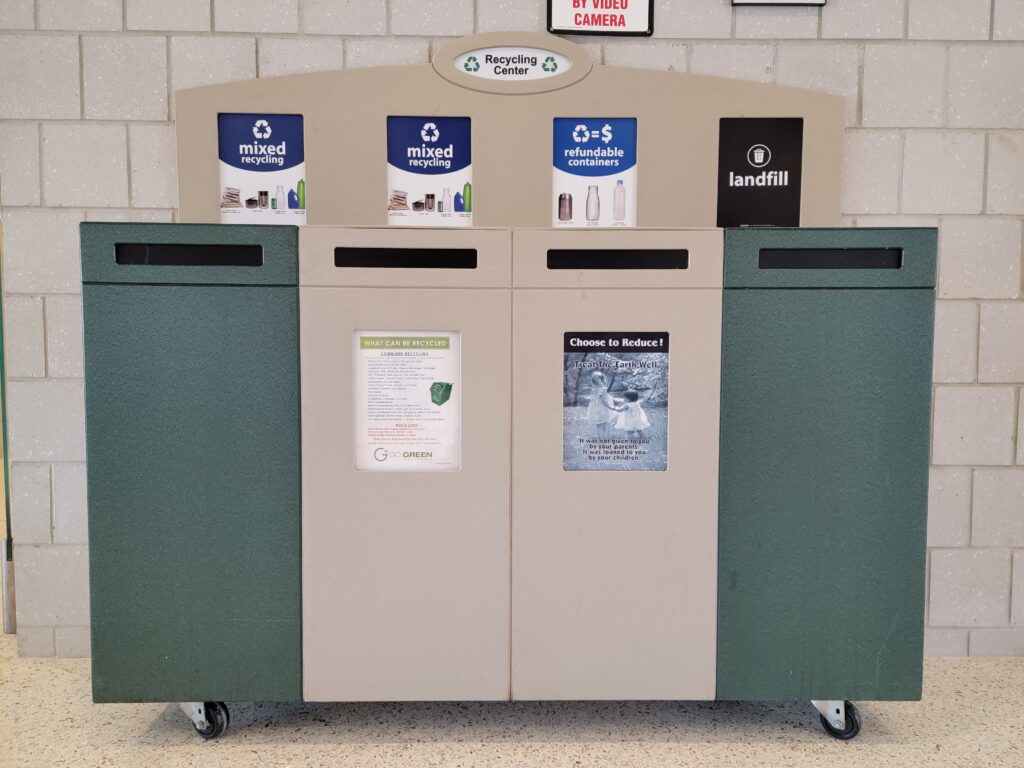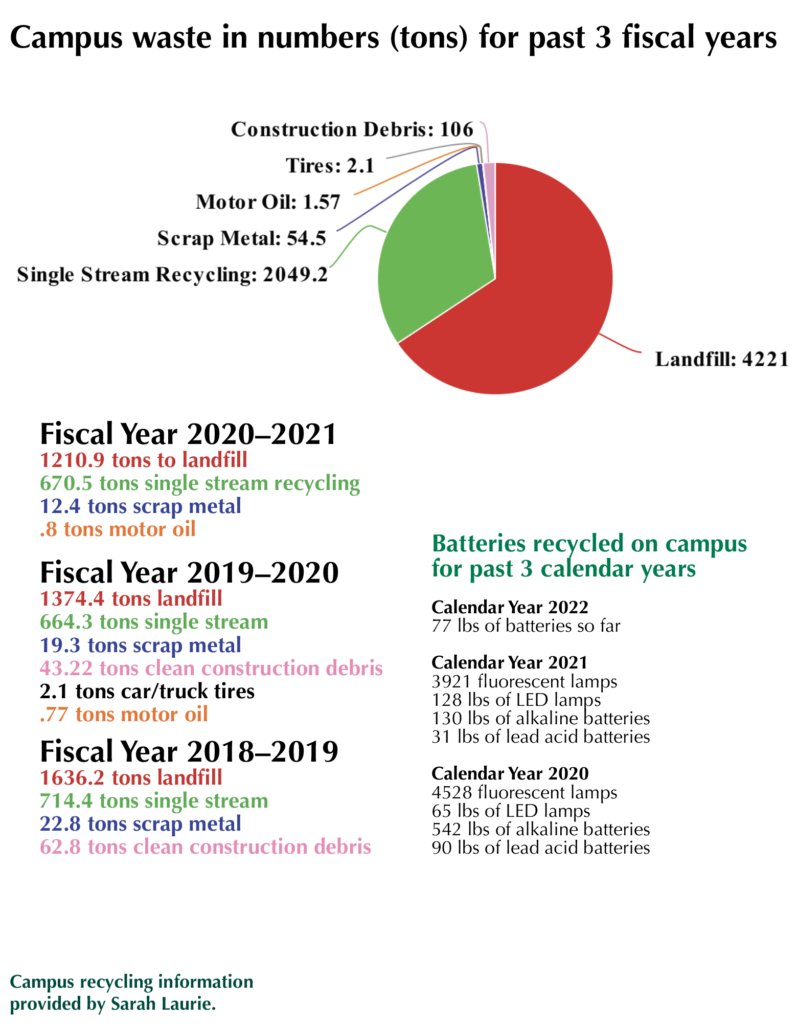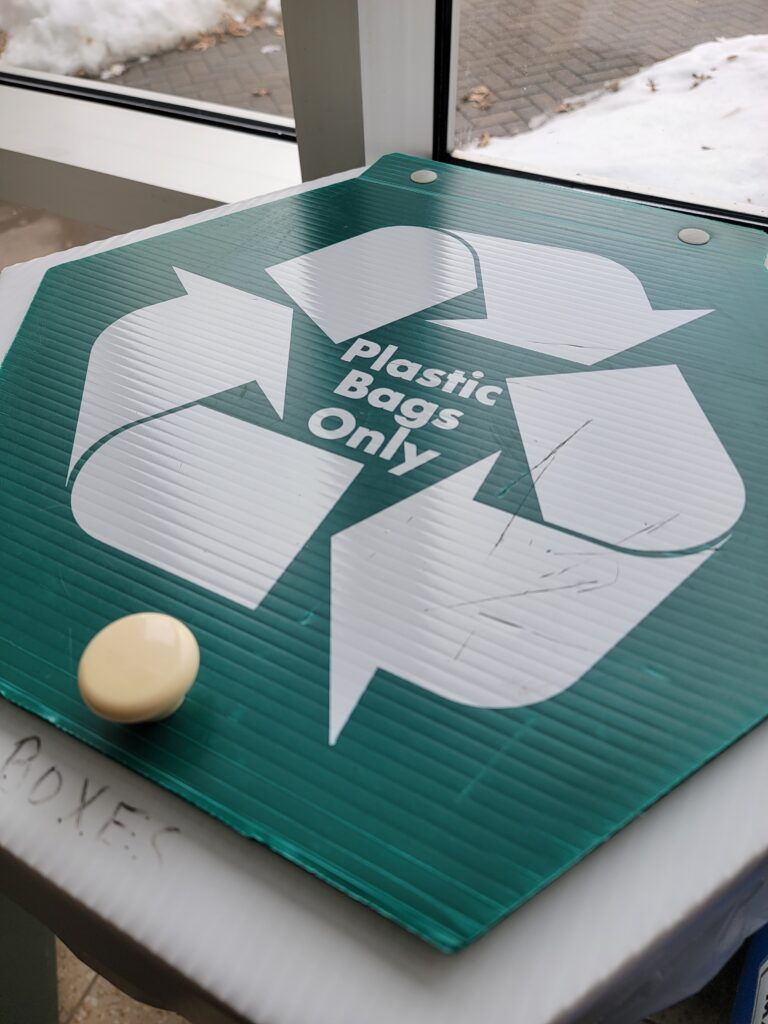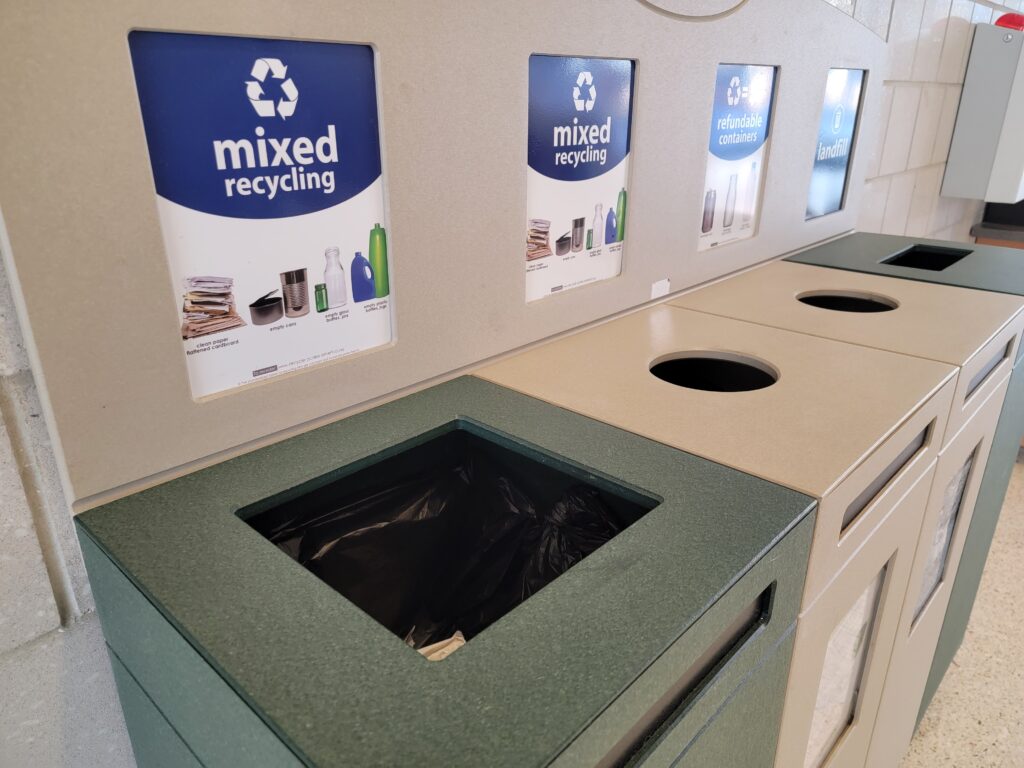
JULES HOEPTING
Managing Editor
Plastic soda bottle in hand, you stand in front of a waste receptacle in Fenton Hall. You read the departments on the receptacle from left to right. Are you holding onto mixed recycling? Onto a refundable container? Or is it just waste?
For the past three fiscal years, SUNY Fredonia has consistently recycled around 30% of its waste; the actual percentage of campus recycling has been slowly increasing, according to Sarah Laurie, the campus Director of Environmental Health & Safety & Sustainability. (See infographic for more information.)
By placing recycling bins in every dorm and next to most public trash cans on campus, there are many opportunities for students to engage in single-stream recycling. Single stream recycling is a mix of all kinds of recyclable materials — plastics, paper, aluminum, etc. — that is separated by the recycling processor rather than disposer. The option to recycle plastic bags is also publicly available in University Commons as well as in Fenton Hall and Mason Hall. Other materials, such as scrap metal, batteries, lightbulbs and waste oil, are recycled by the campus on an operational basis rather than by the public, according to Laurie. (See infographic for more information.)

Despite the school’s efforts, when The Leader polled our followers on Instagram (@leaderfredonia) asking if they viewed Fredonia as a recycle-friendly campus, 64% (57 people) voted “no” while 36% (32 people) voted yes. When asked if they thought the school recycled more or less than approximately 30% of waste, 58% (52 people) voted “less” while 42% (37 people) voted “more.” In an open-ended question, “What are some ways campus can improve student access to recycling?,” increasing recycling locations and improving recycling signage was suggested.
According to Laurie, a common reason for students and faculty not engaging in recycling is they believe what is put into the recycling bins doesn’t actually get recycled. Some students have seen custodial staff dump recycling materials and landfill materials into the same bin and concluded the staff was sending recycling materials to the landfill. This is a misconception, however, as there are custodial carts that have two different bags — one for recycling, one for landfill — within the same bin.
Another reason for people not recycling is speculation that the efforts put into recycling create more pollution than sending recyclables to landfill. For example, fossil fuels are required to transport recycling to a processing plant — which could be thousands of miles away — and more energy is required to clean and repurpose the recyclables.
In SUNY Fredonia’s case, recycling is processed fairly locally. Recyclables are collected by waste management company Casella and are taken to Casella’s facility in Jamestown. According to an email from Bill Devlin, a division manager of Casella in Jamestown, cardboard is bailed in Jamestown and then shipped to Cascades Containerboard Packaging near Buffalo where the materials are then repurposed. “The remainder of [non-cardboard] commodities typically are sent to a much larger Casella owned recycling plant in Ontario County, NY that has the ability to sort materials through automation,” Devlin explained.
In order to increase recycling on campus, students and faculty need to know how to recycle and what resources are available to them. When recycling bins were introduced on campus over a decade ago, there was a lot of confusion about what could and could not be recycled.

Thus, the campus put ample effort into recycling education that has since dropped off, according to Laurie. She believes more effort needs to be put into recycling education again. “We have a really transient [student] population, right? So every year we get 600 or 1,000 new freshmen coming in, depending on the size of the class, and [Fredonia’s recycling program] is new for them,” Laurie explained.
Laurie also discussed how previous efforts to increase student excitement with recycling, such as participating in various types of recycling competitions amongst other campuses, yielded little success and have since been discontinued.
“We have the infrastructure, we have the operational side pretty well figured out. Now it’s trying to tackle the human behavior piece — and that’s a lot more difficult.”
According to Fredonia’s last-submitted STARS report, a self-reporting framework for colleges and universities to measure their sustainability performance, Fredonia was rated as “bronze.” For comparison, 14 universities were rated as “platinum,” 176 were rated as “gold,” 245 were rated as “silver” and 89 were rated as “bronze.” The universities rated were predominantly located in the United States with some Canadian schools as well as a few universities in other countries.
So, what is the campus doing to improve that score? A recycling graduation robe program is currently being prepared by the faculty Sustainability Committee. Starting this spring, graduating students will be given the option to donate their robe after graduation. Starting the academic year, graduates will be given the option to wear a used graduation gown instead of buying a new one.
On the theme of recycling clothing, Campus Life is currently in the works of hosting a clothing swap set to take place early spring. Students will be able to unload unwanted clothes in exchange for new-to-them clothing.
For students who are interested in improving campus sustainability, they can join the Sustainability Committee of the Student Association (inquire via email sa.speaker@fredonia.edu or jhoepting@fredonia.edu) along with student clubs such as FredGrows (@fredoniagrows on Instagram). Sarah Laurie is also open to any suggestions students have, and can be emailed at sarah.laurie@fredonia.edu.

Did you know the recycling containers on campus are arranged in a specific order?
Research has indicated that because primary English speakers read from left to right, they also process information from left to right.
“When you walk up to one of those recycling containers that has four bins in it — one is for landfill and one or two is for single stream recycling — people will actually look at the category on the left first and in their mind determine if what they have in their hand fits that category. And if it does, that’s where they put their item for disposal — even if it would better fit one of the other categories,” explained Sarah Laurie, the campus Director of Environmental Health & Safety & Sustainability.
Laurie used the information from this research, which she has since forgotten the name of, and applied it to campus several years ago.
“We actually went through all the containers on campus. And it turns out we had landfill on the left, and we switched them all.”
